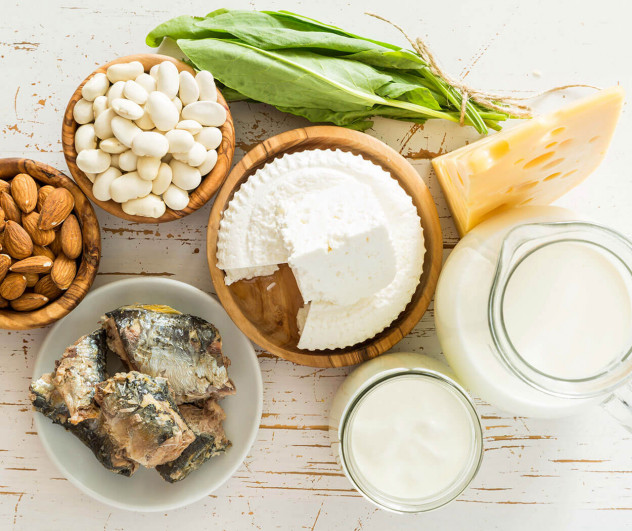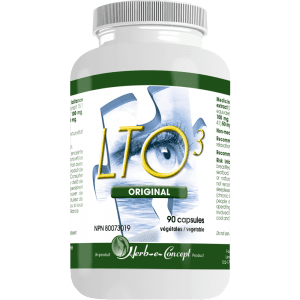You must be logged in to post a review.
Collagen Bamboo Glucosamine
$34.99
The natural supplement Collagen Bamboo Glucosamine has been specially designed to meet the needs of active people aged 40 and over who want to delay the effects of aging on joint, cartilage and bone health. With an important source of type II collagen, this product can help promote cartilage cell synthesis, soften joints and ease the pain. It can also help slow the onset of osteoarthritis and the degradation of cartilage. It is also known for its anti-inflammatory properties.
Additional Information
Type II Collagen
Type II Collagen is the most abundant structural protein in cartilage.
The medicinal efficacy of cartilage comes from its Type II collagen content. We know that cartilage consists of four to five different types of collagen. There are, in fact, 14 varieties, but the most important, widespread and therapeutic is Type II Collagen. Type II collagen extracted from the sternal cartilage of chickens 6-8 weeks of age contains the highest concentration of anti-inflammatory proteoglycans supporting the joints.
Type II collagen also contains a recently discovered antioxidant called CMGP (cartilage matrix glycoprotein) that helps reduce joint oxidation. In addition to this new antioxidant, Type II collagen contains other active ingredients that make it more effective than glucosamine and chondroitin alone.
It is very important to understand that only Type II collagen extracted from chicken sternal cartilage is as effective. This is because it contains the highest concentration of joint-protecting proteoglycans.
Type II Collagen resists enzymatic digestion of cartilage proteins, promotes the synthesis of new cartilage cells and proteoglycans, improves joint lubricant production, protects the cartilage surface from oxidation, is a powerful anti-inflammatory agent and acts as a pain regulator.
Bamboo
The bamboo node is cryocrushed (crushed at -196°C) to obtain 85% organic silica. The highest concentration on the market.
Silica is a major component of collagen and stimulates its synthesis in bones and joints.
The organic silica contained in bamboo provides more flexibility, and more mobility to the joints (such as wrists, hips, knees, lumbar and cervical spine) and relieves joint pain by stimulating cellular reconstruction.
Organic silica is an anti-inflammatory; it accelerates the healing process; it revitalizes, protects, and regenerates all of the cells in the body; it is a “pain reliever” whose effect is often felt in a matter of minutes.
Glucosamine
Glucosamine helps synthesize cartilage by increasing key constituents such as glucosaminoglycans and promoting the incorporation of sulfur in cartilage.
Glucosamine has several effects allowing it to counter the onset of osteoarthritis: it delays cartilage degradation, stimulates the production of cartilage cells, and has an anti-inflammatory effect. Please refer to the document by our arthritis and osteoarthritis specialist to understand the different mechanisms of these pathologies and the role that each of the 4 Herb-e-Concept products plays with regard to these mechanisms.
Collagen Bamboo Glucosamine is intended for a clientele age 40 and over that remains active and wants to delay the effects of aging on joints, cartilage health and bones.
For an optimal combination, combine with coral calcium.
Helps relieve joint pain associated with osteoarthritis.
Helps protect against cartilage deterioration.
Helps maintain healthy cartilage and joints.
Helps develop and maintain bones, cartilage, teeth and gums.
Helps with the formation of connective tissue. Promotes wound healing.
Helps to stay healthy.
Articular cartilage is composed of a dense extracellular matrix (ECM) with a sparse distribution of highly specialized cells called chondrocytes. The ECM consists primarily of proteoglycans and Type II collagens, inorganic minerals (including calcium and silicon) and water. Normal adult cartilage has a uniform porous network structure, which is formed in three stages:
- Synthesis of the main components of the cartilage matrix. Chondrocytes use nutrients from synovial fluid to synthesize collagens (primarily Type II collagens) and proteoglycan.
- Construction of the cartilage matrix structure. Collagen fibres consist of Type II collagen molecules and form a network called collagen network, then gelatin-type water-retaining proteoglycans and inorganic minerals entangled with the structure of the collagen network (see Figure 1).
- Construction of the cartilaginous structure. Chondrocytes are not widely dispersed in the extracellular matrix, forming a characteristic porous network structure. With this structure, the cartilage of the human body is hard, flexible and elastic. Flexible and free movement of the joints benefits from the anti-pressure, damping, lubrication and shock absorption functions of the cartilage (see Figure 2, 3).
There is a benign interaction between chondrocytes and the cartilage matrix. The cartilage matrix anchors and provides nutrients to the chondrocytes, and the primary function of chondrocytes is to maintain the balance of the composition and decomposition of the cartilage matrix components. Chondrocytes can secrete various matrix degradation enzymes to degrade the old and damaged matrix, while cartilage can absorb the nutrients provided by the cartilage matrix and synthesize a new cartilage matrix to complete the degraded matrix through complex biochemical reactions. Balancing the synthesis of a new matrix with the decomposition of the old matrix allows the articular cartilage structure to remain intact.
Pathogenesis of osteoarthritis. Running, jumping over obstacles and other daily activities in young adults lead to degradation and wear of the cartilage matrix. At this stage, the chondrocytes repair the worn matrix by accelerating the synthesis of the new matrix and rebuilding the normal structure of the cartilage matrix. But in cases of aging (over 30 years of age), obesity, excessive exercise, heavy work, injuries, and lack of cartilage nutrition, chondrocytes are no longer able to fully compensate for the loss of Type II collagen fibres and proteoglycans, even at increased rates of synthesis. This means that the collagen fibers and proteoglycans break down, [there is] continuous mineral loss, and cartilage begins to crack, flake and deteriorate, cartilage begins to crack, flake and deteriorate (sic), and various symptoms of osteoarthritis gradually occur. Chondrocytes are no longer able to completely compensate for the loss of Type II collagen fibers and proteoglycans, even at increased synthetic speeds.
Effective prevention of the prevention (sic) and treatment of osteoarthrosis. Nutrition and chondrocyte stimulation for the synthesis of a new cartilage matrix should be an effective way to correct osteoarthropathy. So, what are the essential nutrients for cartilage and joints? To get the answer, let’s analyze the compositions and structures of the cartilage matrix in detail. The cartilage matrix is a porous network of collagen and proteoglycans. The main component of the collagen network is Type II collagen. Proteoglycans are composed of glycosaminoglycans and proteins. There are three main types of glycosaminoglycans: keratinsulfate, chondroitin sulfate and hyaluronic acid. A proteoglycan has a multi-brush structure. Hyaluronic acid and a series of small brushes form the stem and bristles of the large brush, respectively. The small bottle brush tree (the protein-glycan monomer) is composed of a central protein. Keratin and chondroitin sulfate form the front and rear part of the hairs of the small bottle brush, respectively. With the above knowledge, scientists have conducted numerous clinical studies and have concluded that the main dietary nutrients for feeding cartilage are: hydrolysed Type II collagen, glucosamine, MSM (methylsulfonylmethane), chondroitin sulfate, calcium, silicon and vitamin C. We call the dietary nutrients to feed cartilage chondroprotective agents.
These nutrients can be used to synthesize the corresponding components of the cartilage matrix that can be used by chondrocytes to reconstruct the complete structure of the cartilage matrix (see Table 1). The correspondence between dietary supplements, cartilage matrix and cartilage matrix structure. Osteoarthritis occurs when the cartilage that cushions the bones of the joints gradually deteriorates. In addition to cartilage degradation, osteoarthritis affects the entire joint. It causes bone changes and deterioration of the connective tissues that hold the joint in place and attach the muscle to the bone. Osteoarthritis is a degenerative disease that worsens over time and often results in chronic pain and inflammation of the joint mucosa. In non-operative treatment, the main goals are to reduce pain and improve function.
Non-steroidal anti-inflammatory drugs (NSAIDs) are the most commonly prescribed agents for pain and inflation management, but they focus primarily on the treatment of pain symptoms and do not regenerate the cartilaginous structure. It is clear from the scientific literature that NSAIDs from in vitro and in vivo studies in both animals and humans have a significantly negative effect on the cartilage matrix, resulting in accelerated deterioration of articular cartilage in arthritic joints. They also increase the risk of gastrointestinal bleeding and adverse vascular events.
Chondroprotective agents treat the cause of osteoarthritis, they not only relieve pain, but also help repair and regenerate cartilage structure, delay cartilage degeneration, and reduce gastrointestinal side effects compared to NSAIDs. In the long-term, unlike NSAIDs, they have an excellent safety profile, with as few adverse events as placebo.
How do we choose our products?
- Arthri Concept et le calcium de corail (et le silicium Bam-bü) sont recommandés pour les personnes âgées et les
patients. - Utilisez de la glucosamine de bambou au collagène et du calcium de corail pour les besoins de maintenance (à partir de 40 ans).
- Glucosamine sulfate 500 mg (2-Amino-2-deoxy-D-glucose sulphate – Glucosamine Sulfate Potassium Chloride)
- Hydrolysed Type II Collagen 100 mg (Gallus Gallus Cartilage)
- Silicon 28 mg (Bambusa Vulgaris – Complete Plant)
- Ascorbic acid 2 mg (Vitamin C) (For 1 capsule)
Healthy joints
Naturally present in the body, collagen makes skin, bones, cartilage and ligaments strong and supple. Often associated with beauty and youth, it also plays a major role in the growth and maintenance of healthy joints. As we age, this protein becomes more difficult to synthesize.
This is where Collagen Bamboo Glucosamine comes in. For people age 40 or more, this natural supplement not only helps counteract cartilage deterioration, but also restores collagen. Important assets for anyone interested in staying active for a long time to come!

Pain relief
Osteoarthritis occurs when the cartilage that cushions the bones of the joints gradually deteriorates. It commonly affects the knees, hips, hands and spine, causing pain and stiffness that worsens over time and directly affects quality of life. The unique composition of Collagen Bamboo Glucosamine slows the onset of osteoarthritis by stimulating cartilaginous cell growth. It is known for its anti-inflammatory properties. This supplement effectively relieves joint pain and other osteoarthritis symptoms.

Testimonials
An effective combination
This product combines the many benefits of collagen, bamboo silica and glucosamine in one. In addition to its positive effects on bones, joints, teeth and gums, this natural supplement also helps maintain overall health. It’s a perfect solution for people in the prime of life!

Coral Calcium: a natural ally
For best results, we recommended taking Collagen Bamboo Glucosamine in combination with the Calcium Corail supplement. Fossilized coral has long been used in traditional Japanese medicine to promote bone regeneration, control body acidity and facilitate glucosamine uptake. Another plus for your quality of life!












Reviews
There are no reviews yet.